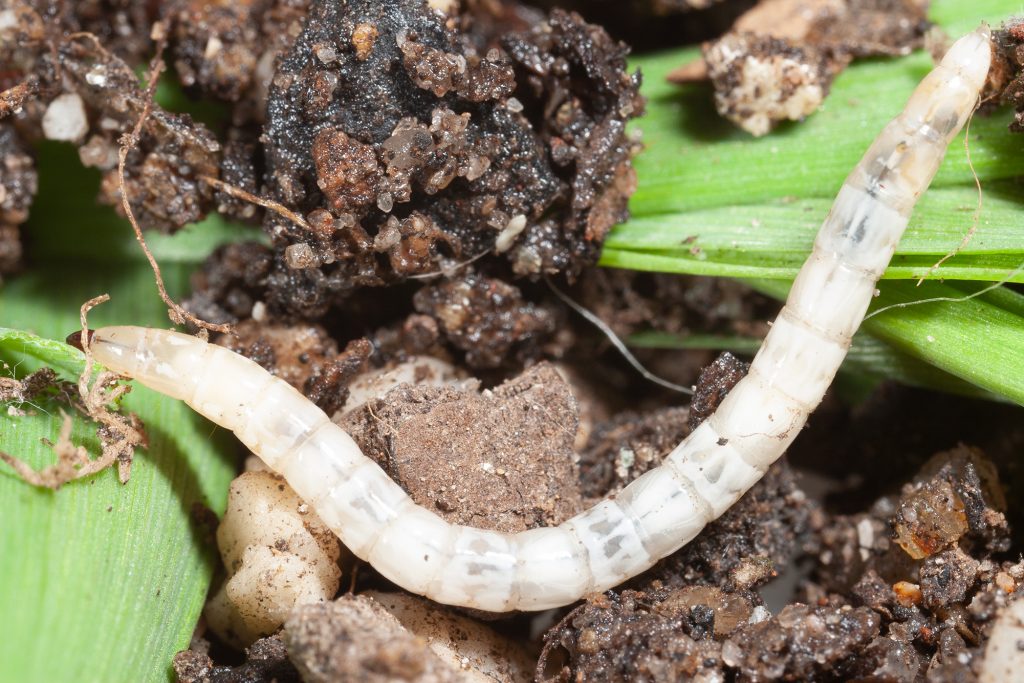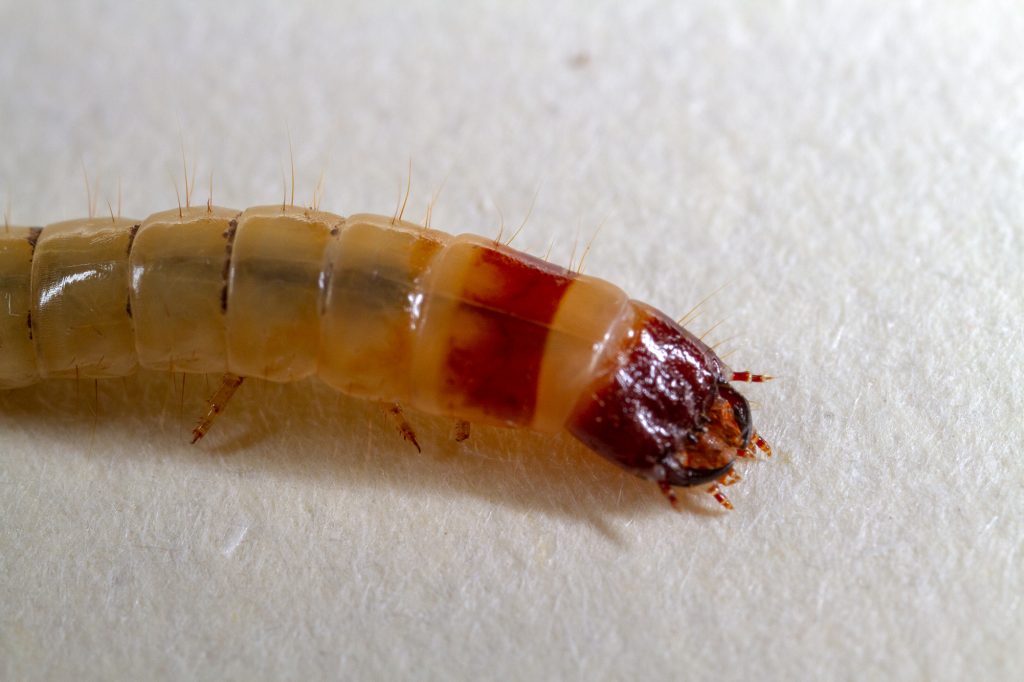At best stiletto flies are mistaken for earth worms; at worst they can be mistaken for soil pests.
Stiletto fly larvae (Therevidae) – you have most likely encountered these wriggly, ‘worm-like’ critters rapidly moving when inspecting soil for pests or digging up plants to observe their roots.
You may have even mistaken them for juvenile earthworms or pests such as wireworm larvae!
But did you know that stilletto fly larvae are generalist predators of soil-dwelling invertebrates?
Therefore, it’s valuable to distinguish this family of flies from other common subterranean inhabitants.
Stiletto fly identification
Stiletto fly larvae can be recognised by their smooth white to pinkish, legless bodies, which taper at both ends. They have a small head capsule and their bodies appear divided into nineteen segments.
Earthworms can be distinguished from stiletto fly larvae by the lack of a head capule and a highly segmented body (> 100 segments).
The body segmentation of wireworm larvae is more reminiscent of stiletto fly larvae, however the former can be distinguished by the presence of three pairs of legs and a serrated plate with two protrusions at their tail-end.


Photo by Andrew Weeks, Cesar Australia 
Photo by Andrew Weeks, Cesar Australia
Acknowledgements
Field observations
Thomas Parker – AGnVET (Riverina, NSW)
Cover image: Photo by Andrew Weeks, Cesar Australia





